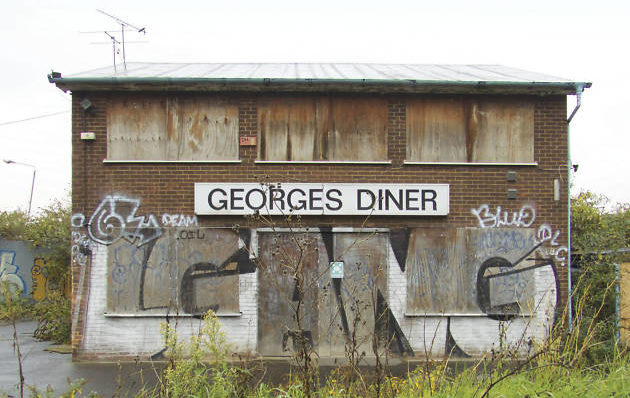Checking the ranking of the top fifty books on architectural history for sale on Amazon may well seem an arcane pursuit. I did this recently, though, thinking of carefully targeted Christmas presents. What caught my eye as I checked to see if I might have missed new books on Romanesque cathedrals, Borromini and ancient cities, was a clutch of titles jostling for position with remarkably similar content or overlapping themes: Abandoned Places. Abandoned Industrial Places. Abandoned Cold War Spaces. Abandoned: The Most Beautiful Forgotten Places from Around the World. As if to add a just a touch variety, the list offered Derelict London, Hidden London and, apocalyptically, Bunker: Building for the End Times.
While a fondness for romantic ruins is nothing new, there is something poignant in these matching and mirroring titles. Throughout 2020, buildings, streets, places and indeed entire quarters of cities that were fully alive just the previous year have been abandoned. While inquisitive urban geographers and self-conscious pyscho-geographers have made something of a cult of the exploration of abandoned buildings, especially those of recent decades, from Jet Age wind tunnels to forbidding suburban asylums, this sense of abandonment has come to affect us all. The books on the architectural history list are not so arcane after all.
Looked at, as if through a glass darkly, the Covid-19 pandemic has been something like a nuclear war, sweeping across countries as the radiation from fission bombs dropped by B-52, Bears and Vulcans and Inter-Continental Ballistic Missiles could have done at the height of the Cold War. While novels concerning the threats and effects of pandemics, in one guise or another, were written decades before Hiroshima, Nagasaki and Bikini Atoll, a morbid fascination with bunkers mushroomed from the early 1950s.
Where could we escape? What would it be like to live underground? How would our world, our abandoned towns and cities look and feel like when, cautiously, we poked our noses above ground? Unfamiliar, no doubt. I think this haunting sense of potential loss through pandemic or nuclear war is not wholly dissimilar from the feeling many people have had, and still experience, when once familiar buildings and places lose their purpose, are abandoned and demolished. Those left empty and in varying states of ruin come to haunt us. Those pit-heads that spoke of mining communities. Those factories where British industry once manufactured things. Those research stations testing supersonic aircrafts replaced or about to be replaced by yet more supermarkets and online distribution depots.
We abandon entire cultures even as pandemics and other catastrophes threaten the worlds we know. Aside from stories, photographs, newsreels and oral histories, what remains of them most prominently is abandoned buildings, some mummified as museums, others as lyrically haunting as the ruins of Tintern Abbey were to Wordsworth.










Join the discussion
Join like minded readers that support our journalism by becoming a paid subscriber
To join the discussion in the comments, become a paid subscriber.
Join like minded readers that support our journalism, read unlimited articles and enjoy other subscriber-only benefits.
Subscribe